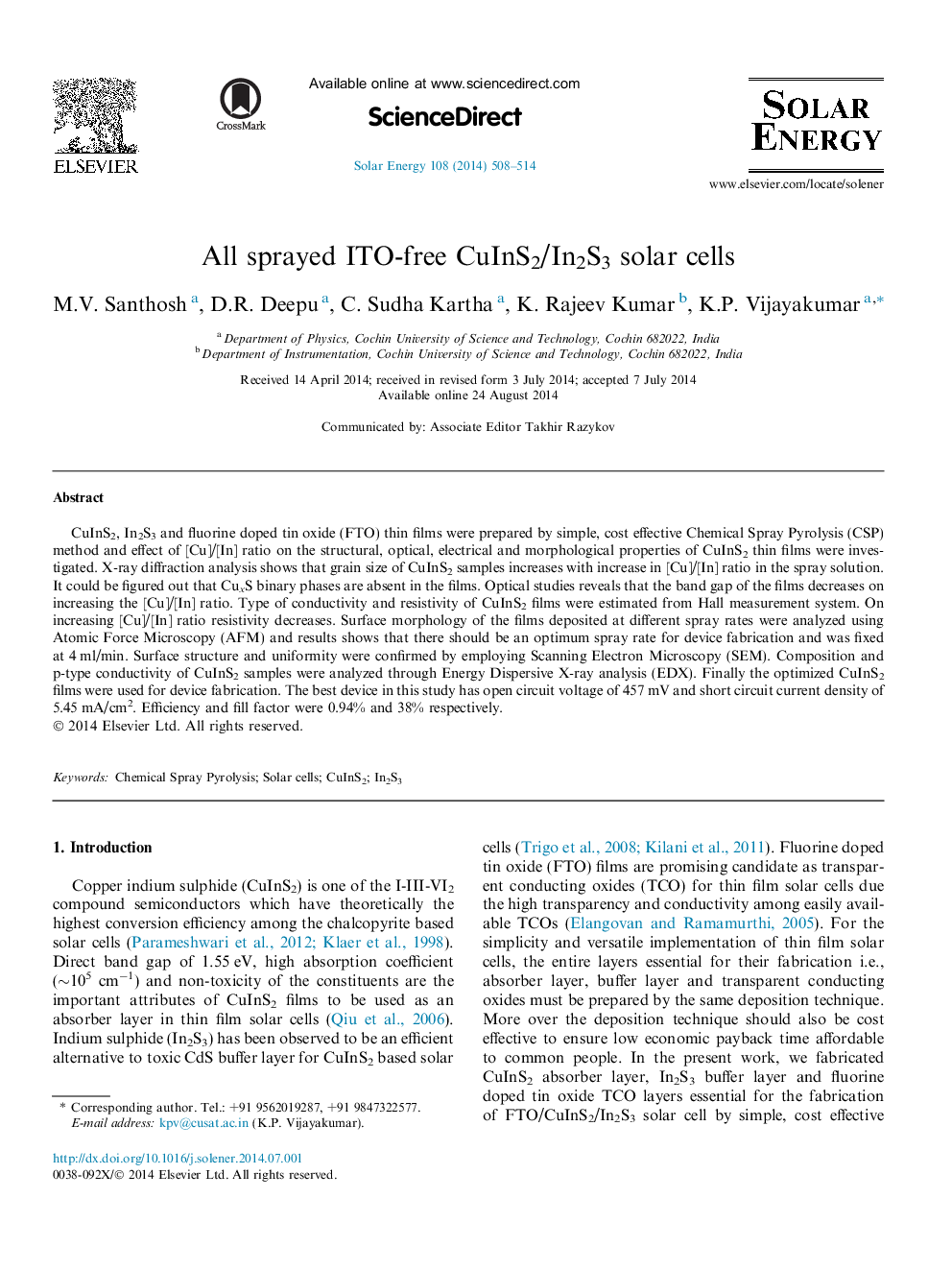| Article ID | Journal | Published Year | Pages | File Type |
|---|---|---|---|---|
| 1549901 | Solar Energy | 2014 | 7 Pages |
•Cost effective CSP was used for all sprayed FTO/CuInS2/In2S3/Ag solar cells.•KCN etching for CuInS2 could be avoided, since CuxS binary phases were absent.•Efficiency achieved is 0.94%, a significant result for the above configuration.
CuInS2, In2S3 and fluorine doped tin oxide (FTO) thin films were prepared by simple, cost effective Chemical Spray Pyrolysis (CSP) method and effect of [Cu]/[In] ratio on the structural, optical, electrical and morphological properties of CuInS2 thin films were investigated. X-ray diffraction analysis shows that grain size of CuInS2 samples increases with increase in [Cu]/[In] ratio in the spray solution. It could be figured out that CuxS binary phases are absent in the films. Optical studies reveals that the band gap of the films decreases on increasing the [Cu]/[In] ratio. Type of conductivity and resistivity of CuInS2 films were estimated from Hall measurement system. On increasing [Cu]/[In] ratio resistivity decreases. Surface morphology of the films deposited at different spray rates were analyzed using Atomic Force Microscopy (AFM) and results shows that there should be an optimum spray rate for device fabrication and was fixed at 4 ml/min. Surface structure and uniformity were confirmed by employing Scanning Electron Microscopy (SEM). Composition and p-type conductivity of CuInS2 samples were analyzed through Energy Dispersive X-ray analysis (EDX). Finally the optimized CuInS2 films were used for device fabrication. The best device in this study has open circuit voltage of 457 mV and short circuit current density of 5.45 mA/cm2. Efficiency and fill factor were 0.94% and 38% respectively.
